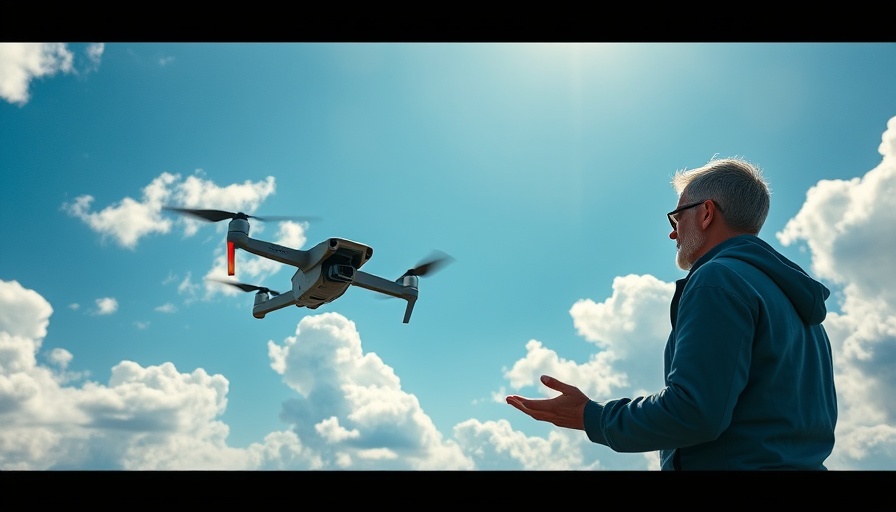
Celebrating a Decade of FPV Innovation and Community
In the world of First-Person View (FPV) flying, few have traveled so far in a relatively short time than FPV enthusiasts like Stuart from UAV Futures. As he reflected during a recent live stream, it's now been ten years since he first shared his FPV journey. This milestone offers a perfect opportunity to discuss not only the evolution of technology in this field but also the significance of community and mental wellbeing in this exciting hobby.
In FPV live stream -10 years in FPV, the discussion dives into the evolution of drone technology and the importance of community, prompting us to explore these key insights further.
The Evolution of FPV Technology
Over the past decade, the advancements in FPV technology have been staggering. From the introduction of cutting-edge drones and high-definition cameras to the increasing accessibility of DIY kits for hobbyists, the FPV landscape has transformed dramatically. Stuart noted several products and innovations, including the popular Ruby Air Unit from RunCam, illustrating how quickly equipment has progressed. The key takeaway for aspiring FPV pilots is that there are more choices available than ever, each offering unique benefits and challenges.
Community Support and Mental Wellbeing in FPV
What sets the FPV community apart is its culture of support and camaraderie. In a world where personal struggles can often lead to feelings of isolation, Stuart emphasized the importance of maintaining mental health and fostering a positive environment among fellow FPV enthusiasts. This evocation of community spirit creates a safe space for everyone, be it seasoned professionals or newcomers. Encouraging discussions about mental health not only helps individuals cope with challenges but also builds a more inclusive atmosphere.
Tips for Beginners: Navigating the Complexities of FPV
One of the ongoing challenges new entrants face is understanding the complexities of FPV systems, which can feel overwhelming. Stuart shared essential advice: “If it isn’t broken, don’t fix it!” Beginners often make the mistake of tinkering too much with settings and components without fully understanding them, leading to issues that are often difficult to resolve.
Stuart also encourages newcomers to invest in quality gear instead of falling for cheaper, low-quality options that often come bundled in ready-to-fly kits. Choosing wisely at the onset can save time and frustration later. For those feeling lost or stuck, reaching out to community platforms like DIY FPV can provide invaluable assistance.
The Future of FPV: New Technologies on the Horizon
As the FPV industry continues to evolve, it’s exciting to consider where it might go next. Innovations in drone technology, such as enhanced flight controllers and better integration with smart technology, are on the horizon. The advent of artificial intelligence in drone operations may soon allow for safer and more autonomous flying experiences. As Stuart emphasize, there’s never been a better time to get involved in FPV.
Final Thoughts: Join the Adventure
The upcoming journey in FPV is not just about technology but is also about building connections and supporting one another. With ten years of shared passion and learning in FPV, both seasoned veterans and newcomers alike can immerse themselves in this vibrant community. Remember, it isn't merely about flying and racing drones; it’s also about enjoying every flight and connecting with fellow hobbyists.
So whether you're building your first drone or reconnecting with old gear to enjoy flight once again, make it a priority. And remember to speak to someone if you're feeling less than your best; you’re not alone in this journey. Happy flying!
 Add Row
Add Row  Add
Add 




Write A Comment